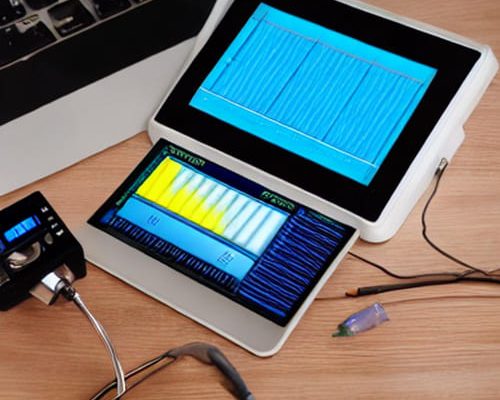Load Flow, Short Circuit, and Relay Coordination in Power System Analysis
To provide your facility with a power system that is safe, efficient, and reliable in both normal and aberrant operating conditions, a power system analysis is comprised of several technical assessments and the application of scientific analytic concepts and methodology.

The objectives of a power system analysis are to comprehend how a system will operate in various configurations and the effects of disturbances such as capacitor switching, the start of a large motor, and arc discharge incident energy. A power system inspection may also be required to ensure that safety equipment functions reliably in the event of a brief circuit or other problem. Studies of energy systems are essential for ensuring a consistent and reliable energy supply. A power system that is well-designed guarantees dependable operation and increases plant availability under all operating conditions. Poorly constructed systems have flaws, inefficiency, and decreased security.
A typical power system analysis may include the majority or all the following sub-studies:
- Research and load flow analysis
- Analyzing and investigating weak circuits
- Taking into consideration relay coordination
- Investigation and analysis of arc flashes
- Studying harmonics
- Dynamic and transient analysis
- Earthing studies
This blog entry will discuss the initial three investigations. and comprehend the methods and strategies used to conduct each investigation.

Load Flow Analysis and Research:
A load flow analysis examines an electrical network to determine the transfer of power. It assists in determining the operational status of the power system, the quantity of active and reactive power generated, losses, voltage, current, and power factor.
The load flow analysis comprised the following three stages:
- Modeling of networks and components for electricity systems
- The formulation of load flow equations.
- Using numerical algorithms, the equations for load and flow are solved.
There are three methods for calculating electrical system information:
- The Gauss-Seidel System is one of the most frequently employed analytical techniques. This method has the advantages of being easy to use, requiring few computer resources, and completing the task more swiftly. However, due to the delayed convergence, additional iterations are necessary. The quantity of vehicles increases proportionally with the number of iterations.
- The more difficult Newton-Raphson method employs quadratic convergence, which is useful in complex situations. As fewer iterations are required to achieve convergence with this method, less computational capacity is required. It is more accurate because it is less dependent on complex factors such as modulating transformers and bus selection for downtime. It may be difficult to program because it requires a great deal of machine memory.
- Fast Decoupled Load Flow System (FDLF) is an additional method for load flow analysis. This method’s primary advantage is that it requires less computer memory. It is recommended as a replacement for Newton-Raphson for real-time power grid management due to its five-times-faster calculation performance. There are few instances in which this application may be utilized. Therefore, it is harder to convert it to other power industry concerns, such as flow or system protection.


Short Circuit Analysis & Research:
In a short circuit analysis, one or more of the following types of short circuits will be considered:
- Line-to-line fault, which happens when two phases go black simultaneously.
- In a solitary line-to-ground failure, only one phase contacts the earth.
- A double line-to-ground defect in which both phases and the ground are simultaneously shorted.
- During a three-phase malfunction, all three phases are shorted together.
If the type of problem is known, it will be simpler to draw a one-line diagram of the power distribution system. To calculate short circuits, use the single-line diagram and an impedance diagram that includes numerical values for the utility source, transformer, and conductor in relation to each component’s usable voltage. The approximated values include the brief circuit current, the transformer multiplier, and the full-load amps. To ensure that the power distribution system is outfitted with the necessary safety measures at various locations to prevent peril and downtime, it is essential to compare the collected data to the equipment ratings.
Relay Coordination Analysis:
Relay coordination is essential to the design of a secure power system because coordination systems enable fast, efficient, and specific relay processes that can be used to isolate the source of the problem. Coordination analysis determines the extent to which overcurrent preventative devices are necessary in the power system. It also aids in determining the optimal specifications, configurations, and measurements to establish a balance between equipment security and constrained system performance.
Software for modeling power systems, such as ETAP, is used to collect data. Analysis of short circuits measures defect currents at each electrical location. By selecting and adjusting protective devices, system equipment failures can be reduced. Comparing the time-current characteristic curves of the protective device exposes coordination failures. Adjustments guarantee that protective devices function dependably and selectively.
The Advantages of the Power System Analysis Include:
- Now, the electrical grid is more reliable.
- Utilizing equipment with the appropriate voltage rating.
- Improvements in safety and a decline in electrical hazards
- Compliance with applicable laws and electrical installation regulations.
- Alternative strategies are proposed to enhance the system’s durability and efficacy.
- The current condition of the electrical system is documented in preparation for any forthcoming inspections.
CareLabs provides Load Flow study and analysis, Short Circuit study and analysis, and Relay coordination analysis to monitor the voltage at various buses and the actual and reactive power flow between buses, analyze the system under various fault conditions, and determine how well the system handles small and large disturbances. Contact us or request a quote to obtain an analysis of your company’s electricity infrastructure in Chile. One of our customer service representatives will reply within twenty-four hours.



